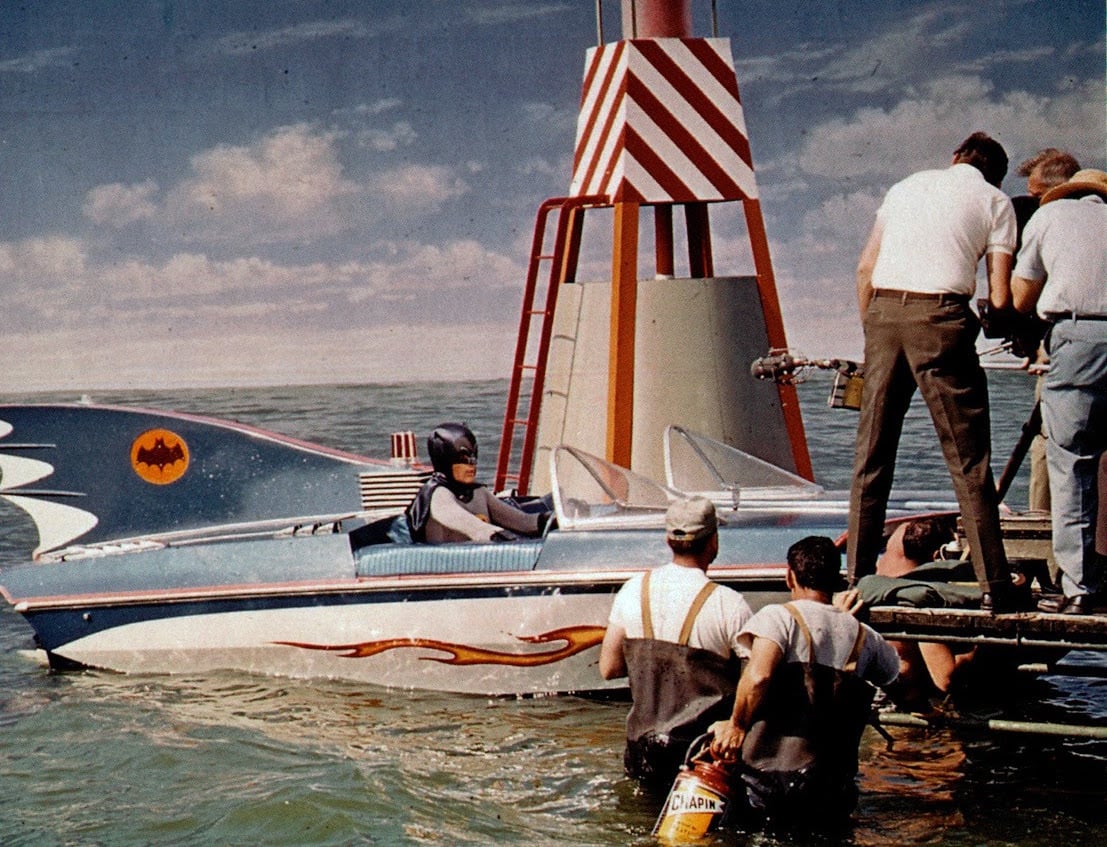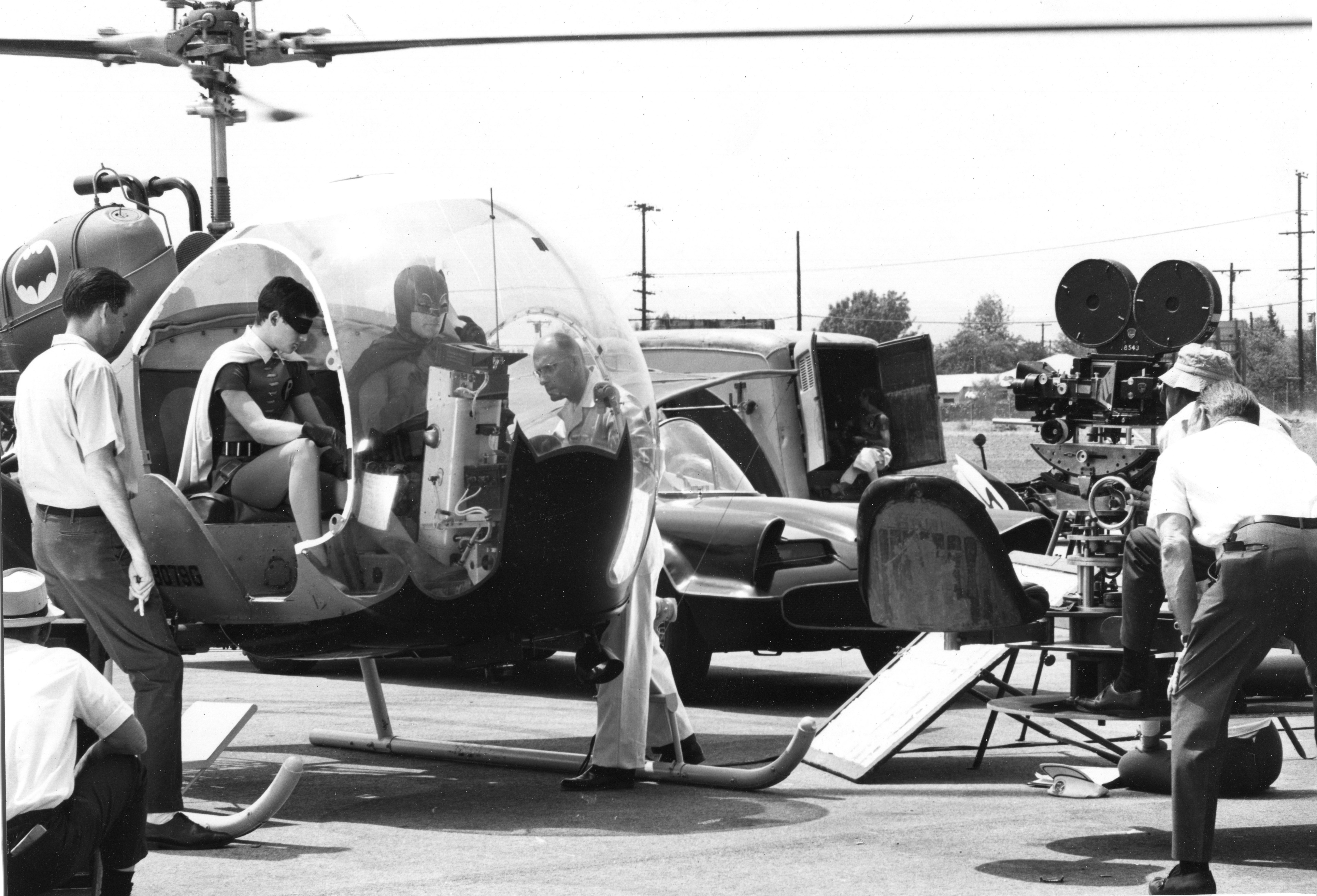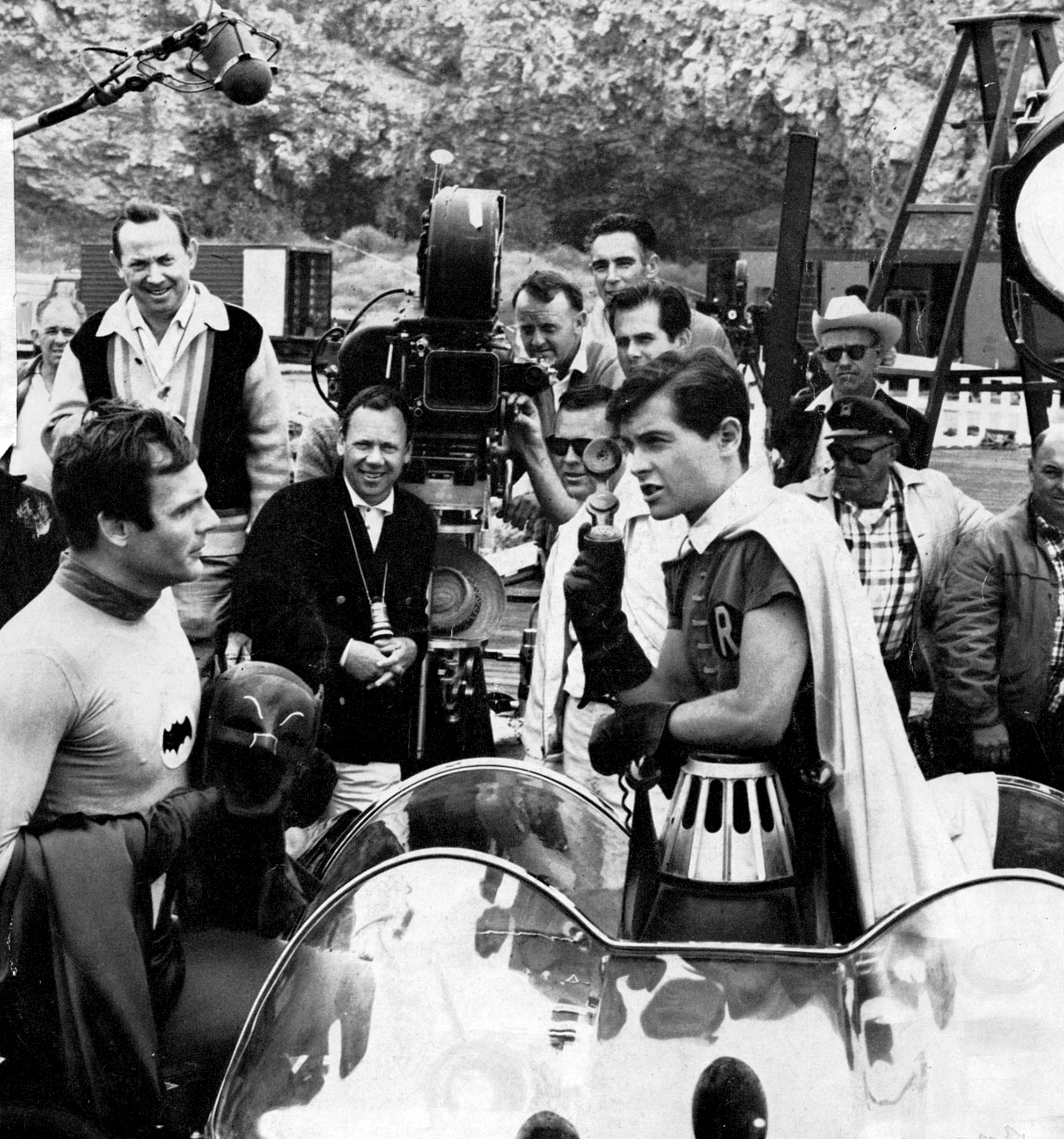
Wrap Shot: Batman: The Movie
Behind the scenes of this iconic camp classic with cinematographer Howard Schwartz, ASC.
“The style of the Batman series has been called ‘high camp’ and ‘pop art,’ but to those of us who work on it, the approach is highly specialized ‘comic strip,’” director of photography Howard Schwartz, ASC noted in American Cinematographer upon completing the 1966 feature film Batman: The Movie. “We work to achieve this feeling through a combination of art direction, set decoration, wardrobe design, special effects and lighting.” And how.

The Day-Glo-hued photographic approach of the popular ABC Caped Crusader series (1966-’68), starring Adam West as Batman and Burt Ward as his trusty sidekick Robin, was designed by cinematographer (and future ASC president) Ralph Woolsey, ASC during the show's initial episodes. Schwartz and Jack A. Marta, ASC then took over and alternated behind the camera, closely following Woolsey's blueprint. Schwartz explained, “The overall style is the result of many small details. For example, even the pictures on the walls of the sets have colored mattes instead of neutral mattes, just as they are in comic strips. We frequently use colored gelatins over our lamps to splash color onto walls in the background of the scene. This gives the set extra depth and is visually more interesting.”


This photo (left) was taken during the tight 26-day production of the Batman feature, directed by Leslie Martinson, as the not-so-Dark Knight (West) races comically about a pier trying to dispose of a large bomb. Schwartz is observing the action from the top of the ladder, plotting a shot for his blimped camera while his cohorts seem less than excited about the superhero’s dilemma. In the film, the Dynamic Duo battle a cadre of supervillains: The Penguin (Burgess Meredith), The Joker (Cesar Romero), Mr. Freeze (George Sanders), The Riddler (Frank Gorshin) and Catwoman (Lee Meriwether).
Overcast weather plagued the production throughout the shoot, which took place in normally sunny Santa Barbara, California. However, Schwartz felt that the situation “proved what I've always maintained: color is easier to shoot than black-and-white. Had we been shooting in black-and-white, there would have been almost no way to keep everything from going flat gray. But in color, instead of depending upon planes of light for separation, the colors themselves create their own separation. Many production departments feel that color takes longer to shoot than black-and-white, but I don't agree. You have to use large lighting units, but it doesn’t take any longer.”
Faced with a lighting dilemma unique to Bat-matography, the cameraman reported, “We have to be careful in keying our lights to make sure we have enough eye light to get into those holes in [Batman and Robin’s] masks. The simple way would be to use an eye-light on the camera, but I prefer to set a light on the floor, because an eye-light, if you're not careful, can flatten out your lighting effect when you move in close.”
In a telling aside that reflected the era in which he worked, Schwartz (seen below, seated next to the lens) also observed, “Batman is a pretty exciting show in color, and since only about 10 percent of the TV audience in this country have color receivers, we feel the feature will give many viewers a chance to see Batman in color for the first time.”







